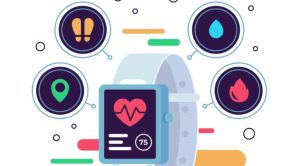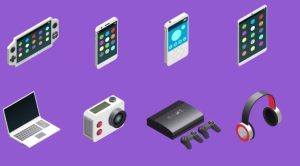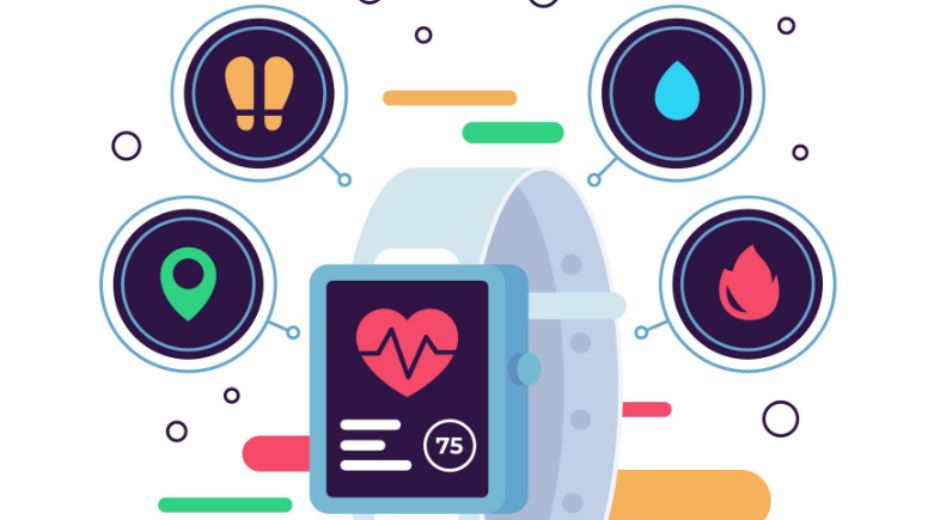Wearable Health Tech: Innovations Transforming Personal Wellness This Year
Wearable Health Tech: Innovations Transforming Personal Wellness This Year
Introduction: The Rise of Wearable Health Tech
In recent years, Wearable Health Tech has evolved from simple fitness trackers to sophisticated devices capable of monitoring heart rate, sleep patterns, blood oxygen levels, and even early warning signs for chronic conditions. These devices have become an integral part of personal wellness, empowering users to take control of their health and make data-driven decisions.
The global demand for Wearable Health Tech is booming. According to industry reports, the market is projected to reach billions in value within the next few years, driven by advancements in sensor technology, miniaturization, and AI-powered analytics. Companies are investing heavily in research and development to deliver more accurate, user-friendly, and aesthetically appealing devices.
Key Types of Wearable Health Devices
Wearable Health Tech comes in various forms, each designed to address different aspects of wellness:
Smartwatches: Beyond tracking steps, modern smartwatches can monitor heart rate variability, detect arrhythmias, and provide guided breathing exercises.
Fitness Bands: Lightweight and affordable, these devices are perfect for daily activity tracking and sleep monitoring.
Biosensors: Worn on the skin or embedded in clothing, biosensors continuously monitor biomarkers such as glucose levels, hydration, and stress hormones.
Wearable ECG Monitors: These devices provide medical-grade electrocardiogram readings, allowing users and doctors to track heart health over time.
Smart Clothing: Embedded with sensors, smart clothing monitors posture, muscle activity, and cardiovascular performance, ideal for athletes or rehabilitation patients.
Benefits of Wearable Health Tech
The advantages of Wearable Health Tech extend far beyond basic fitness tracking:
Real-Time Health Monitoring: Continuous tracking allows users to detect early warning signs of health issues and take preventive action.
Data-Driven Wellness Decisions: Wearable devices collect a wealth of data that can inform lifestyle changes, exercise routines, and dietary adjustments.
Enhanced Patient Care: Healthcare providers can use wearable data to monitor patients remotely, reducing hospital visits and improving outcomes.
Motivation and Accountability: Gamification features, reminders, and progress tracking help users stay consistent with health goals.
Innovations Driving Wearable Health Tech
Several technological advancements are shaping the future of Wearable Health Tech:
AI and Machine Learning: These technologies enhance predictive analytics, enabling early detection of conditions such as atrial fibrillation or sleep apnea.
Flexible Electronics: Thin, flexible sensors allow for more comfortable, unobtrusive devices that can be worn continuously.
Integration with Telehealth: Devices can sync with healthcare platforms, providing doctors with accurate, real-time patient data.
Battery and Energy Efficiency: Improved battery technology ensures longer device life without frequent recharging.
Personalization: AI algorithms provide customized insights based on individual health data, lifestyle, and genetic information.
Challenges and Considerations
Despite its many benefits, Wearable Health Tech also faces challenges:
Data Privacy: Personal health data is sensitive. Companies must implement robust encryption and comply with privacy regulations such as HIPAA and GDPR.
Accuracy and Reliability: Devices must be clinically validated to ensure accurate health monitoring, especially for medical decision-making.
User Adoption: Comfort, style, and ease of use play a significant role in long-term adoption. Devices that are cumbersome or unattractive may see limited engagement.
Cost: High-end devices can be expensive, potentially limiting access to broader populations.
Impact on Fitness and Wellness
Wearable Health Tech is transforming fitness and wellness by providing actionable insights:
Activity Tracking: Users can monitor steps, distance, calories burned, and intensity of exercise.
Heart Health: Continuous heart monitoring can detect irregularities before they become critical.
Sleep Tracking: Sleep quality analysis helps optimize recovery and overall health.
Stress Management: Devices track stress levels using heart rate variability and suggest mindfulness exercises.
Integration with Other Technologies
Wearable devices are increasingly integrated with other smart technologies:
Mobile Apps: Most wearables connect to apps that provide detailed analytics, trend tracking, and social sharing features.
IoT Ecosystem: Smart home devices can interact with wearables to adjust lighting, temperature, or alarms based on health data.
Cloud Platforms: Secure cloud storage allows users to maintain historical health records and share them with healthcare providers.
Case Studies: Leading Wearable Devices
Apple Watch Series: Offers advanced ECG monitoring, blood oxygen tracking, and fitness coaching.
Fitbit Sense: Focused on stress management, sleep quality, and heart health.
Whoop Strap: Popular among athletes for recovery monitoring and performance optimization.
Oura Ring: Small, discreet, and highly accurate in sleep and readiness tracking.
Future Trends in Wearable Health Tech
Looking ahead, the industry will likely see:
Implantable Devices: Continuous health monitoring without external wearables.
Predictive Health Analytics: AI-driven forecasts of health events based on accumulated data.
Personalized Nutrition: Integration with dietary tracking to optimize individual health outcomes.
Expanded Telehealth Integration: Seamless communication with healthcare professionals for remote patient care.
Conclusion
Wearable Health Tech is reshaping the landscape of personal wellness and fitness. By combining real-time monitoring, AI insights, and seamless integration with health platforms, these devices empower users to take control of their health like never before. For more insights and emerging trends in wearable technology, visit Techtazz.com, or see industry coverage on Techcrunch.com. Parents and wellness enthusiasts can also learn practical tips from Coolparentingtips.com to make informed decisions about adopting wearable devices.
Innovate Empower Elevate

Wearable Health Tech: Innovations Transforming Personal Wellness This Year
Wearable Health Tech is transforming personal wellness, enabling real-time health monitoring, improved fitness tracking, and proactive medical insights. Learn about the latest devices and trends shaping the industry.

AI Governance: Shaping the Future of Ethical Technology
AI Governance is critical in regulating artificial intelligence to ensure ethical standards, transparency, and accountability. Learn how emerging policies and frameworks are shaping the responsible development of AI

Step-by-Step Guide to PC Optimizing for Maximum Performance
Learn how to optimize your PC for maximum speed, stability, and efficiency. Follow this step-by-step guide to boost performance in 2025.

Top Productivity Apps of 2025 to Supercharge Your Workflow
Learn which productivity apps in 2025 can help you stay organized, manage tasks, and supercharge your workflow.

Innovative Gadgets & Devices That Are Changing Daily Life
Discover the most impactful innovative gadgets changing homes, work, health, and entertainment in 2025.

Top 10 Tech News & Trends Shaping the Industry This Year
Stay updated with the latest tech trends and innovations impacting industries, consumer products, and global technology in 2025.

From Setup to Success: Practical Tips You Can Use Today
Master practical tips for success in 2025. From goal setting and organization to automation and well-being, learn how to turn setup into tangible results.









